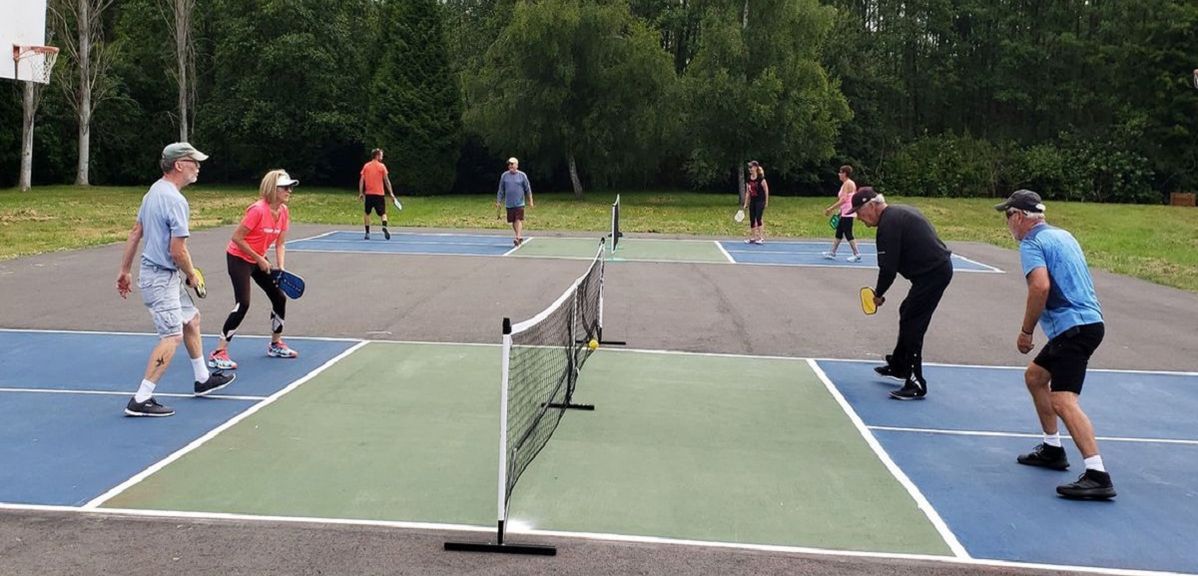Navigating Rules for Pickleball Court Construction in Your Area
Creating a pickleball court in your area requires a nuanced understanding of different local regulations, including zoning legislations, structure permits, and security criteria. Engaging with regional authorities and the area is essential for making certain compliance and promoting assistance.
Recognizing Local Zoning Legislations
When thinking about the building and construction of a pickleball court, understanding regional zoning legislations is critical to ensuring compliance and preventing possible lawful concerns. Zoning regulations dictate how land can be utilized and commonly consist of specifications pertaining to entertainment centers. These regulations can differ significantly by town, affecting elements such as court placement, dimension, illumination, and noise levels.
Prior to launching building and construction, it is important to consult the local zoning board or planning division to identify the particular guidelines that relate to your residential or commercial property. Particular zones may limit leisure activities, while others may require details authorizations or adherence to certain guidelines. It is also important to take into consideration troubles, which establish exactly how far frameworks have to be from building lines or various other buildings.
In addition, personal developments, such as homeowner organizations (HOAs), may enforce their own rules pertaining to the building and use of pickleball courts. Recognizing these policies can prevent pricey modifications or lawsuits down the line. Engaging with regional stakeholders and neighborhood members can provide useful understandings and foster support for your project, making sure that it aligns with the area's requirements and assumptions.
Getting Necessary Structure Permits
Just how does one browse the complexities of acquiring needed structure permits for a pickleball court? Usually, you will certainly require to submit a detailed site plan that details the recommended court measurements, products, and format.

When authorizations are gotten, it is crucial to follow any inspection routines and requirements throughout the building stage. Keeping communication with local authorities will promote a smoother authorization process and help prevent prospective troubles. By extensively preparing and understanding the permitting landscape, you can successfully navigate the complexities associated with building a pickleball court while staying certified with all neighborhood laws.

Assessing Environmental Influence
When intending the construction of a pickleball court,A detailed assessment of environmental influence is important (Pickleball court construction). This analysis helps determine possible effects on regional ecological communities, water resources, and area visual appeals. Trick factors to think about consist of website selection-- guaranteeing that the court is not constructed on environmentally delicate land, such as wetlands or habitats for threatened types
Soil stability and drain patterns must be assessed to avoid erosion and water pooling, which might negatively impact bordering plant life and wild animals. In addition, the choice of materials is crucial; going with sustainable and environmentally friendly alternatives lessens ecological damage.
The application of reliable stormwater monitoring techniques is one more crucial element, as it assists alleviate overflow and sedimentation. Engaging with local environmental firms can provide valuable understandings right into guidelines and finest methods details to your location.
Finally, neighborhood input can be useful in recognizing any type of regional environmental problems and cultivating assistance for the project. By conducting a comprehensive ecological influence evaluation, stakeholders can guarantee that pickleball court construction straightens with sustainable practices and adds positively to the community's eco-friendly health and wellness.
Adhering To Safety Requirements
Making sure compliance with safety and security requirements is essential for the effective building and operation of a pickleball court. Abiding by recognized safety and security laws reduces the risk of crashes and injuries, making sure a protected setting for players.
Trick security criteria include correct court dimensions, surface area products, and illumination needs. The court must fulfill the main measurements of 20 feet vast by 44 feet long for doubles play, with appropriate barrier zones to stop injuries from wayward balls. Pickleball court construction. The surface area should be built from non-slip products to enhance traction and lower the possibility of drops
In addition, lighting needs to be adequate for evening play, supplying consistent illumination to prevent darkness that can prevent visibility. Regional building ordinance might also dictate certain needs for fencing and web height to make certain gamer safety and avoid unapproved accessibility to the court location.
Normal inspections and maintenance are vital to copyright these standards in time. By focusing on safety and security conformity, court proprietors not just shield gamers but also foster a positive credibility within the neighborhood. This commitment to security can motivate higher involvement and pleasure of the sporting activity, eventually adding to its growth and sustainability.

Engaging the Area in Planning
Area involvement in the drawing board of pickleball court building can dramatically enhance the project's general success. Engaging regional residents and stakeholders promotes a sense of ownership and motivates joint decision-making, which can cause broader assistance for the effort.
To properly entail the area, coordinators must launch public meetings or workshops, giving a platform for citizens to articulate their point of views and choices pertaining to area, layout, and amenities. Surveys and feedback forms can additionally be utilized to collect understandings from a broader target market, making official source sure that diverse point of views are thought about.
Furthermore, forming a community advisory board can facilitate recurring conversations and address worries throughout the planning process. This board can include reps from different demographics, such as regional schools, recreational companies, and community associations, thereby amplifying area depiction.
Efficient communication is vital; updates regarding the project should be regularly shared via e-newsletters, social networks, Learn More Here or local notices. By prioritizing community involvement, planners can grow interest, mitigate possible opposition, and develop a pickleball facility that truly reverberates with local worths and needs. This joint method not just enhances the task however additionally reinforces neighborhood connections.
Final Thought
In conclusion, navigating the intricacies of pickleball court building and construction necessitates an extensive understanding of regional guidelines, consisting of zoning regulations, structure permits, and safety requirements. By adhering to these guidelines and promoting cooperation, effective execution of pickleball courts can be achieved, promoting recreational opportunities and community well-being.
Constructing a pickleball court in your area requires a nuanced understanding of various regional policies, including zoning legislations, building permits, and see here now safety standards.When considering the construction of a pickleball court, understanding local zoning regulations is crucial to ensuring conformity and staying clear of prospective legal problems. By completely preparing and comprehending the permitting landscape, you can effectively navigate the complexities included in constructing a pickleball court while remaining compliant with all neighborhood laws.
In verdict, navigating the complexities of pickleball court construction demands a thorough understanding of regional policies, including zoning regulations, building permits, and safety and security requirements. By adhering to these standards and promoting collaboration, effective application of pickleball courts can be achieved, advertising recreational possibilities and neighborhood well-being.